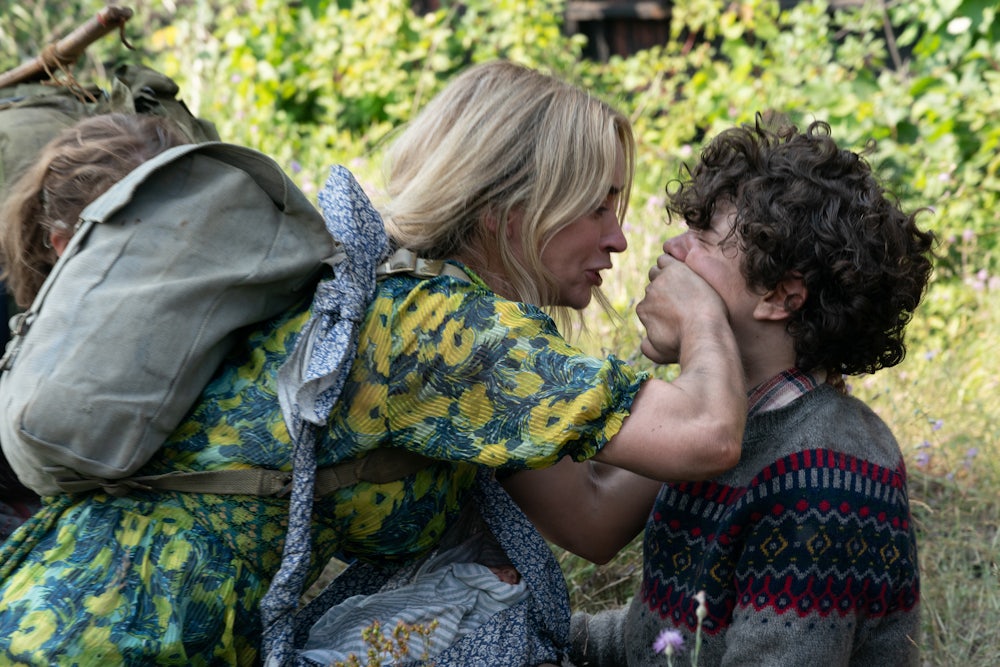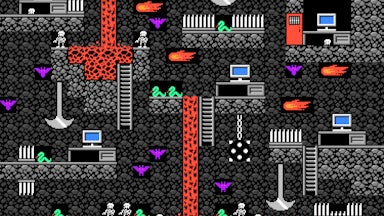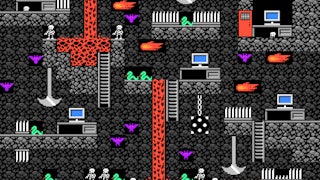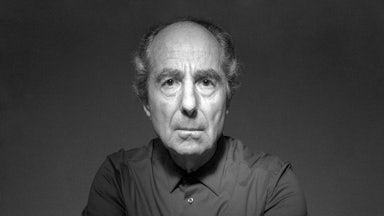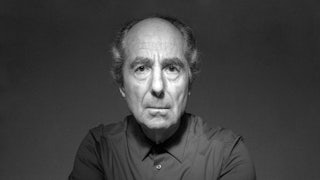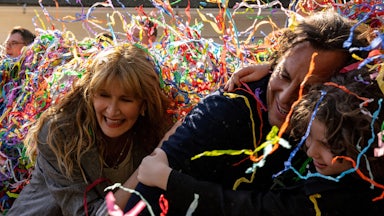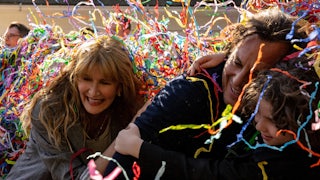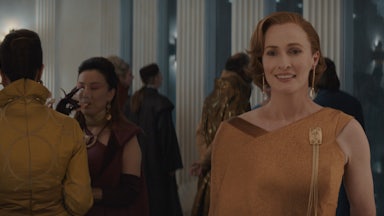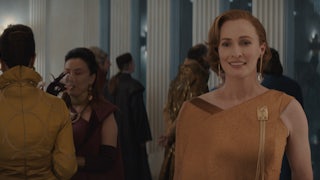It is by now something of a shared joke among its fans that the movie A Quiet Place, the surprise hit of 2018, a horror story in which aliens hunt humans by sound, does not really make sense. The conceit is well suited for the genre: The Abbott family have survived an onslaught of extraterrestrials that kill anything making the slightest noise because their daughter, Regan, is deaf, so they can communicate with one another using American Sign Language. That the family is able to communicate silently helps them keep quiet in their DIY homestead in upstate New York, where they live underground, nestled into a soundproof basement. Regan eventually refashions her hearing aid into a screeching device to torture the aliens, and the first movie ends on a cliff-hanger, as Mrs. Abbott pumps her shotgun and her daughter readies their speaker system for carnage.
As many viewers have pointed out online, the Abbotts appear to have abundant electricity in their home but somehow also use oil lamps, which exist in the film purely to be knocked over and cause trouble. The volume of noise that attracts the aliens is also confusing: If the merest rustle catches the aliens’ attention, why aren’t they attacking the rats as well as the humans? If their hearing is compromised by running water, as we find out when two of the Abbotts have a chat by a waterfall, why doesn’t the family just live there? Why aren’t the aliens attacking the waterfall? What happens if somebody farts in their sleep?
The sequel, A Quiet Place Part II, is now coming to streaming on HBO Max, an event that raises the question of what kinds of fictional worlds merit the franchise treatment. For all its logical inconsistencies, the first movie was well acted and very scary—much better, at least, than your average superhero clunker. It starred a young deaf actress, Millicent Simmonds, and featured aspects of deaf culture that seldom make it into Hollywood representations of disability. For example, hearing aids really do make astonishing noises at very high pitches, often reacting to other electronic devices in a way that causes horrible feedback; Regan’s deafness is not just a convenient plot device but also a way to incorporate the messy aspects of medical technology into a story about the people who use it.
The sequel picks up with the surviving Abbotts on a careful hike to find other people, still terrorized by aliens but driven by the certainty that humanity will flourish together or perish in isolation. Regan is by now an established action hero, a development that lets the sequel focus on her little brother, Marcus, and his own journey to bravery. The movie isn’t as strong as its predecessor, by any stretch of the imagination. But I can’t think of another franchise that has given a deaf or hard of hearing character the space to develop in this way, over multiple movies.
Even so, generalizations about “representational” deaf roles are difficult to make, because the relationship between disability and cinema has been so complicated and varied. The first, silent era of Hollywood, for example, was a bright period for deaf culture. The National Association of the Deaf made a film in 1913 called Preservation of the Sign Language, featuring George Veditz, who signed a philippic in defense of sign language and against pressurizing deaf people to verbalize, at a time when deaf children and adults across America were being discouraged from learning sign language and pushed toward speaking.
Inevitably, sound changed cinema for both deaf and hard of hearing performers (like Granville Redmond and Cesar Romero) and viewers, who were now missing audio data that previously didn’t exist. In early classics like The Hunchback of Notre Dame (1923), the 1931 Frankenstein, and Freaks (1932), characters styled as physically different might technically be sympathetic, but the shock their bodies produce is nevertheless key to the story. Your average horror movie of any era suffers from a more extreme version of this syndrome. Extreme burns, a contorted spine, hook for a hand—such conditions are meant to provide clues about evil.
But by the time Children of a Lesser God (1986) gave us a deaf leading lady in the form of Marlee Matlin—still the only deaf actor ever to win an Oscar—deaf culture was well established, making analysis of mainstream movie representations of deafness possibly irrelevant. In a 2003 signed lecture, Jane Norman of the National Theater of the Deaf distinguished between films starring or made by or about deaf or hard of hearing people and their culture, and films that simply feature deafness. Within those categories there is also variation. The acclaimed Ukrainian movie The Tribe (2014), for example, was entirely signed, with no captions; certain hearing critics praised the clear way that the entirely deaf cast used Ukrainian Sign Language, praise that deaf reviewers like Sara Nović found peculiar, since it was so unlikely the critics could actually follow the dialogue. Nović also pointed out that The Tribe’s hearing director, Myroslav Slaboshpytskyi, had referred to it as a “modern silent movie,” when it isn’t “sans dialogue—it’s just in a language that most people don’t know.”
In a notable shift from historical precedent, horror movies that turn deafness into a solution rather than the source of horror for a hearing audience are currently cresting a wave of popularity. Rob Savage’s 2016 short Dawn of the Deaf imagines an apocalypse that only the deaf survive. In Resident Evil 4, Milla Jovovich’s character collaborates with a deaf little girl. Hush (2016) is about a deaf woman whose would-be murderer fails to produce the desired effect when he taps menacingly on the window. And in A Quiet Place parts one and two, deafness becomes a superpower that aids the characters in their quest to survive.
On the one hand, such plots offer a message with obvious benefits, as they technically center the experience of being disabled. But it is not exactly deaf-friendly for directors to continually cast hearing actors in deaf roles. Hush, for example, starred hearing actress Kate Siegel. Watching her performance next to Millicent Simmonds’s is a good lesson in contrast: For reasons impossible to define because I am hearing, Simmonds is simply more convincing, and therefore more entertaining, to watch. Simmonds joins a fairly small group of deaf and hard of hearing performers who have crossed over to the mainstream, including Russell Harvard, who played H.W. Plainview in There Will Be Blood; C.J. Jones, who played Ansel Elgort’s deaf foster parent in Baby Driver; and of course Marlee Matlin.
If the horror movie is at one end of the spectrum of good taste, deafness has also recently been portrayed in highbrow films as well—although with ambiguous relation to deaf culture writ large. The Oscar for best live-action short film in 2018 went to The Silent Child, a short film about the almost incidental cruelty a mother inflicts on her child by taking her out of sign language training, while last year Sound of Metal, about a drummer who loses his hearing, won for Best Sound Editing, and was nominated for a slew of other categories. Sound of Metal starred Riz Ahmed, a hearing actor; as with the action thriller Baby Driver, it included some deaf actors, but none in the top billing. Meanwhile, Sundance sold the sensitive drama CODA (Child of Deaf Adults), remade from the French La Famille Bélier, to Apple for a stunning $25 million—perhaps the best evidence we have for how deaf culture is changing status in the cultural economy.
Deafness has become a hot subject in moviemaking, it seems, but one with a tense relationship to the world deaf people really live in. Indeed, the prestige A Quiet Place has attained for its partial incorporation of deaf culture into mainstream entertainment sits uneasily alongside this history, for the ableist pressure placed on deaf people has its equivalent in hearing movie culture—from the standard design of movie theaters to the way Hollywood requires that its deaf characters inspire the hearing.
